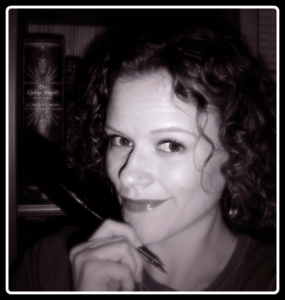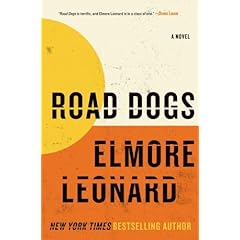
Courtney Cantrell's weekly writing advice.
Writers are people with ideas. Or so the story goes. Most of us, when we sit down to start writing, don’t seem to have much trouble finding something to write about–after all, if we didn’t have the idea, we wouldn’t have sat down to write in the first place. (This might be what’s called circular logic, but I’m gonna go with it anyway.) (Also, this might not apply to the dreaded monster known as Undergraduate Thesis Paper; but in this case, if the list of ideas grows short, there’s always coffee and foolhardiness.)
Hitting The Wall
But I digress. (Shocking, n’est-ce pas?) We writers are people with ideas…except when we’re not. The initial sit-down-and-start-scribbling-like-mad ideas are not a problem. If you’re reading this blog, chances are you’ve got that covered. But what happens after the first bout of hectic, joyous franticness fizzles out? Oh yes, you know what I’m talking about. Don’t you dare shy away. Make eye contact with me, kiddos, I dare you! We’ve all been there: You’re slashing away with your pen at that bountiful pad of lined, yellow paper. You’re hammering away at those keys as if they’re tiny square culprits who drank the last of the milk and stuck the empty carton back in the fridge. Things are flowing, story’s moving, characters are sparkling–and BOOM. Dead end. You smash face-first into a wall, and you’re facing that most horrid of questions: What happens next??? You don’t have a clue, because you. Are out. Of ideas.
Part of the solution to your difficulty is that most horrid of pre-writing exercises, The Outline. But that’s another story and shall be told another time. What we’re concerned with today is ideas, and we’re going to turn to a seasoned pro for advice on where to get them.
Elmore Leonard Gets Ideas…
In “Making It Up as I Go Along” (AARP Magazine [don’t ask], July/August 2009), Elmore Leonard describes some of the ways in which he generates ideas for his stories. Considering his novel-pub cred (Get Shorty, Three-Ten to Yuma
, Out of Sight
, and Rum Punch
, among many others), it seems to this here greenhorn that the man probably knows what he’s talking about. So take a look at some of these and see if any of them resonate with you:
…From Photos
Leonard describes how the main character of his novel Out of Sight started life as a photograph of a woman deputy marshal holding a pump-action shotgun. As some of you, my darling readers, already know, I am a very visual person. I can see myself picking up a magazine like National Geographic
, thumbing through to an article about some 19th-century adventurer, and feasting my eyes and my creative brain on the sepia-fuzzy image of a hood-eyed man in a weather-beaten hat. Maybe he’s wearing a heel-length overcoat and carrying a pack. BOOM again–but in a good way, this time. Suddenly, I have a character named Mac Finchley, and he just stepped out of the magazine pages and into my dead-end chapter–to do what? Shoot my main character in the leg? Build a fire and cook supper? Deliver a message? Juggle spoons? The possibilities are endless, which means the ideas start piling up and the story can roll on, dude.
…From Other Writers
When Leonard needs spare style, he reads Ernest Hemingway every day. When he wants to flavor his prose with humor, he picks up Richard Bissell
. Me, I turn to Stephen King
when I have trouble with characterization, and to Tad Williams
when I need a refresher on world-building. In my opinion, though, it’s best to use caution when reading other writers specifically for help with your own writing. Especially when you’re reading one of your favorites, it’s easy to adopt that person’s style instead of developing your own. That said, we find it natural to imitate what we love. If you focus on finding your own voice and remain aware of your literary surroundings, you should be able to glean what you need from other writers without transplanting their entire crop into your own creative field.
…From History
Moonshine and the library gave Leonard the seeds for his novel The Moonshine War. Speaking of war and not-so-shining historical moments, I have long thought that the epic battles described in the Bible’s
Old Testament provide great framework for battle descriptions in fantasy stories. In ancient Roman tradition, a slave whispered “you are only a man” to the great leader as he made his triumphal entry into the city; in my novel Triad, I turned this into an antagonist’s final test of manhood. Real-world history abounds with facts and people and scenes that will spark a fire of happens-next in your mind. Grab a history book, open it to a random page, and let what you read be the next challenge your characters face. How will they overcome it? Let them tell you.
…From Real People
Leonard based a fictional judge on a real-life friend in the judicial system. For my current work-in-progress, I needed someone to get my main character into a heavy metal concert without a ticket. On the day I wrote that scene, I happened to be texting with my friend Bryan, who listens to the kind of music my MC was hearing. Jokingly, I asked Bryan if I could put him in my book. He said sure–and suddenly, my MC had the knowledgeable insider he needed, complete with a T-shirt bearing the name of Bryan’s favorite heavy metal band. Later on, it turned out that Bryan had information my MC was desperate to get, which moved the MC and other characters halfway across the country. So look around at your friends and family and see who possesses the traits your characters might need to move your story forward. You know these people–their habits, hang-ups, foibles, and faces. Once you start pondering, I promise you’ll find you know exactly who is going to help your characters take over the world. Of course, you should always ask permission before you assign a real person the role of Evil Overlord, lest you acquire too-intimate experience with a lawsuit for defamation of character.
These are only a few ways to generate the ideas that will poke, nudge, prod, or shove your story forward when you’re stuck. There are a myriad of others, and I don’t doubt that you’ve thought of some as you’ve read this article. The mental block of what-happens-next can seem as intimidating as the monolith from 2001: A Space Odyssey. But it need not be this way. Use some of Leonard’s methods to generate some ideas, or follow some of the methods that have worked for you in the past. (Share them in the comments! We all need ’em!) You’ll be skipping gaily around that monolith in no time. Or at least hacking away at it with a hammer and chisel.
To wrap up, a few particularly enjoyable and helpful quotes from Leonard:
“Try to leave out the part that readers tend to skip.”
“Dialogue, in fact, is the element that keeps the story moving. Characters are judged as they appear. Anyone who can’t hold up his or her end of the conversation is liable to be shelved, or maybe shot.” I, personally, heart this one with gusto.
“A photo of a woman marshal with a shotgun, and a prison break, gave me what I needed to write a love story.”
“After 58 years you’d think writing would get easier. It doesn’t. If you’re lucky, you become harder to please. That’s all right, it’s still a pleasure.”
And that, my friends, is WILAWriTWe.
(Support the arts! Click on an Amazon link above and buy something–anything! And I’ll get some pennies with which to buy expensive health food for my chubby cat.)
Photo credit Courtney Cantrell.







great post!
Thanks for stopping by, Mary! 🙂